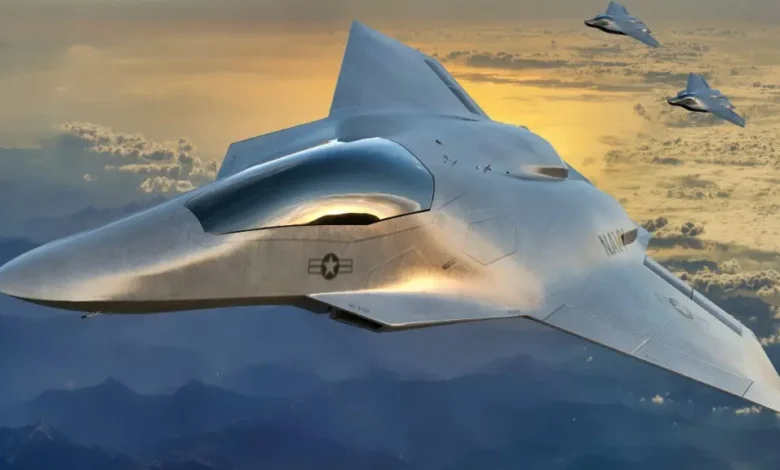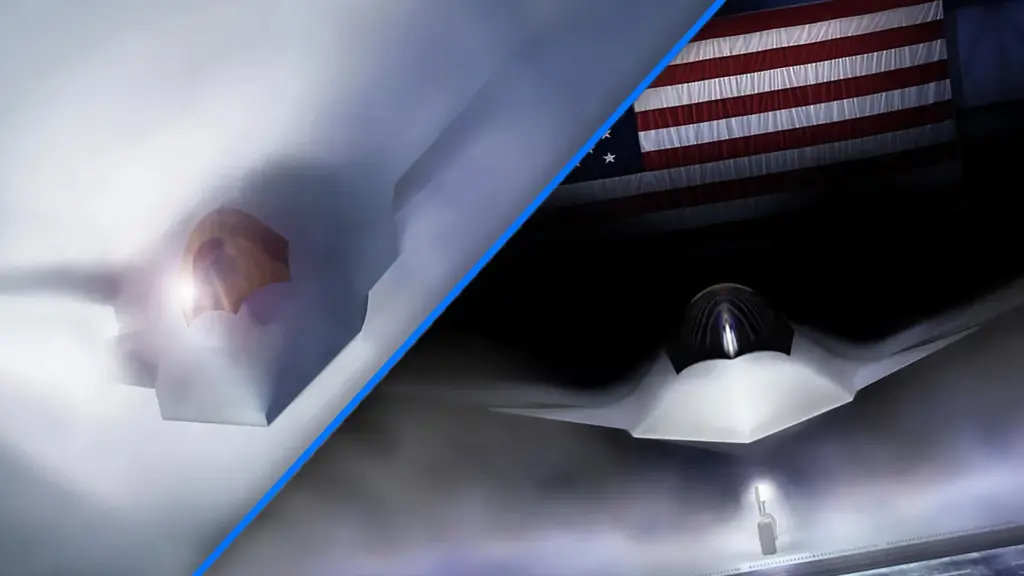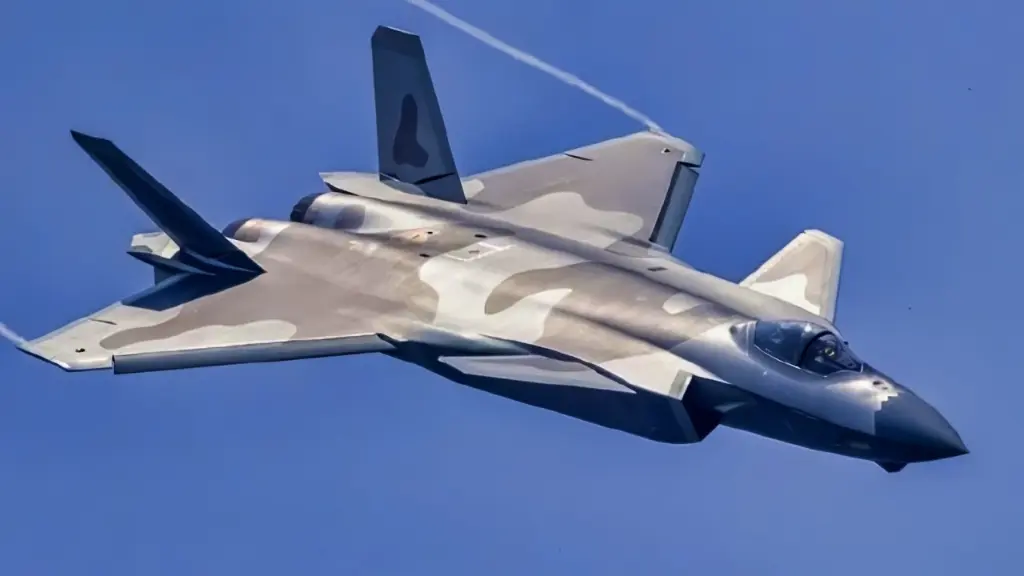Next-Gen Stealth Fighters: How the U.S. NGAD (F-47) and China’s J-35

Could Redefine Air Superiority
Compare the U.S. NGAD (F-47) and China’s J-35 — two 6th-gen stealth fighters revolutionizing air combat with AI, drone wingmen, and unmatched stealth. Discover how they’re reshaping global power in the skies.
The Dawn of Sixth-Generation Air Combat
The dogfights of yesterday — roaring engines, G-forces, and missile locks — are giving way to something quieter, smarter, and far more lethal.
Enter the next-generation stealth fighters:
→ The U.S. Air Force’s NGAD (now officially named F-47)
→ China’s carrier-capable J-35
These aren’t just faster or stealthier versions of the F-22 or J-20.
They’re entirely new species of warplane — designed around AI, unmanned teaming, adaptive systems, and networked warfare.
In this head-to-head comparison, we break down how these two jets stack up — and why their rivalry could define global security for decades.
🇺🇸 United States: NGAD — Now Officially the F-47

✈️ The Future Is Here (Almost)
In early 2025, the U.S. Air Force shocked the defense world by officially naming its 6th-generation fighter the F-47 — skipping F-23, F-24, even F-36. Why? To signal a generational leap, not an iteration.
Developed under the Next Generation Air Dominance (NGAD) program, the F-47 is more than a jet — it’s a combat ecosystem.
🔑 Core Capabilities
| Crew | Optional-manned (can fly with or without pilot) |
| AI Co-Pilot | Real-time threat analysis, weapons management, drone coordination |
| Loyal Wingman Drones | 2–5 autonomous drones accompany each F-47 — acting as sensors, jammers, or missile trucks |
| Adaptive Cycle Engines | Morphing engine nozzles and inlets for optimal stealth or speed (supercruise at Mach 2.5+) |
| Weapons | Internal bays + directed-energy weapons (lasers under development) |
| Stealth | “All-aspect” low observability — radar, infrared, acoustic, even visual signature reduction |
| Networked Warfare | Cloud-connected battlefield — shares data with satellites, ships, ground units, and other jets in real time |
💡 “The F-47 doesn’t win dogfights — it prevents them from happening.” — U.S. Air Force official, 2025
🌍 Geopolitical Role
- Designed to counter China in the Pacific and deter Russia in Europe
- Will replace the F-22 Raptor starting ~2030
- Part of a “family of systems” — not just a plane, but a web of sensors, shooters, and AI
🇨🇳 China: J-35 — The Dragon’s New Fangs

🐉 Carrier Killer in the Making
China’s J-35 (sometimes called FC-31 v2.0) is its answer to the F-35 — but with ambitions to surpass it. Unlike the land-based J-20, the J-35 is carrier-capable, making it central to China’s blue-water navy ambitions.
It’s now entering service aboard the Type 003 Fujian — China’s most advanced aircraft carrier.
🔑 Core Capabilities
| Crew | Manned (for now) — future variants may include AI co-pilot |
| Stealth | Radar-absorbent materials, internal weapons bays, angled surfaces — comparable to F-35 |
| Engines | WS-21 or WS-19 engines (still less powerful than U.S. counterparts — a current weakness) |
| Weapons | PL-15 long-range missiles, PL-10 dogfighters, anti-ship missiles |
| Avionics | AESA radar, IRST (infrared search and track), electronic warfare suite |
| Role | Air superiority + strike missions — especially over the South China Sea and Taiwan Strait |
🌊 Strategic Goal: Project power beyond the First Island Chain — challenge U.S. carrier groups in the Pacific.
📈 Progress & Challenges
- ✅ First squadron deployed in late 2024
- ✅ Successful carrier landings and catapult launches on Fujian
- ⚠️ Engine reliability still lags behind U.S. tech
- ⚠️ Limited production rate — only ~24 built as of Q1 2025
🆚 Head-to-Head: F-47 vs J-35 — The Ultimate Comparison
| Generation | 6th | 5th/early 6th (transitional) |
| Stealth | All-spectrum (radar, IR, visual, acoustic) | Radar-focused, improving IR stealth |
| AI Integration | Core feature — AI co-pilot + drone command | Limited — mostly sensor fusion and targeting |
| Drone Teaming | Yes — 2–5 loyal wingmen per jet | Not yet — may come in J-XY variant |
| Speed | Mach 2.5+ (supercruise) | Mach 1.8 (estimated) |
| Range | Classified (likely 1,500+ miles) | ~1,000 miles (carrier ops limit) |
| Weapons | Internal bays + lasers (future) | PL-15, PL-10, anti-ship missiles |
| Deployment | ~2030 (Air Force) | Now (Navy) — land-based version coming |
| Cost (est.) | $300M+ per jet + drones | ~$90–110M per jet |
| Geopolitical Focus | Global power projection | Regional dominance (Asia-Pacific) |
🎯 Bottom Line: The F-47 is a system of systems — built for future AI-driven warfare. The J-35 is a highly capable 5.5-gen fighter — optimized for regional control and carrier ops.
🤖 The AI & Drone Revolution: Changing the Rules of Air Combat
What truly sets the F-47 apart — and what China is racing to catch up on — is manned-unmanned teaming (MUM-T).
✳️ U.S. Approach: “Loyal Wingman” Ecosystem
- F-47 pilots command a “pack” of drones like the XQ-58A Valkyrie or MQ-28 Ghost Bat
- Drones act as:
→ Missile magazines
→ Radar jammers
→ Sensor relays
→ Decoys - AI handles coordination — freeing the pilot for strategy
✳️ China’s Response: Developing “Drone Carriers” & AI
- Testing carrier-based drones like the GJ-11 Sharp Sword
- Investing heavily in AI for sensor fusion and electronic warfare
- Still behind in autonomous decision-making and drone swarm tech
🤖 “The pilot of 2035 won’t fly a jet — they’ll command a sky full of them.”
🌍 Geopolitical Stakes: Pacific Skies on the Line
This isn’t just a tech race — it’s a struggle for control of the most strategic airspace on Earth.
🇺🇸 U.S. Strategy
- Maintain air dominance over Pacific to protect allies (Japan, Philippines, Australia)
- Counter China’s “anti-access/area denial” (A2/AD) bubbles
- Ensure freedom of navigation in South China Sea
🇨🇳 China’s Strategy
- Push U.S. carriers beyond “first island chain”
- Dominate skies over Taiwan Strait
- Project power via carrier strike groups — with J-35 as centerpiece
⚔️ Flashpoint: A Taiwan contingency could see these jets — or their drones — facing off in real combat within this decade.
📈 What’s Next? 2025–2035 Forecast
| 2025 | Classified flight tests continue | Full carrier deployment begins |
| 2027 | First squadron stood up (estimated) | Land-based variant enters PLAAF service |
| 2030 | Replaces first F-22 units | 100+ units in service across Navy & Air Force |
| 2035 | Full drone integration + laser weapons | AI co-pilot & loyal wingman tests begin |
FAQs: NGAD vs J-35
❓ Is the J-35 China’s answer to the F-35?
Partly — but it’s more advanced in stealth and avionics. Think “F-35 meets early F-22.”
❓ Can the F-47 really fly without a pilot?
Yes — it’s designed for optional manning. Missions like deep penetration or drone command can be fully autonomous.
❓ Who’s winning the 6th-gen race?
The U.S. leads in AI, drone integration, and systems networking. China leads in deployment speed and regional focus.
❓ Will these jets ever fight each other?
Hopefully not — but their capabilities are being designed with that scenario in mind. Drones may clash before pilots do.
Conclusion: The Sky’s New Rulers
The F-47 and J-35 aren’t just planes.
They’re manifestations of national strategy, technological ambition, and future warfare doctrine.
The U.S. bets on networked, AI-driven systems — where one jet commands a sky full of drones.
China bets on rapid deployment, regional dominance, and incremental innovation — getting “good enough” into the field fast.
Whoever masters the fusion of stealth, AI, and unmanned power will rule the skies — and shape the balance of global power.
One thing’s certain:
The age of the lone ace pilot is over.
The future belongs to the system commander — flying not just a jet…
…but an entire sky.



